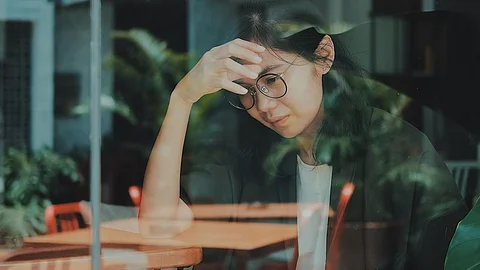

Depression is a significant mental health challenge that is impacting over 300 million people globally. The pharmacological and psychotherapeutic interventions that are presently available are affecting many patients. But, still, some patients are struggling with the draining effects of this condition, showing that there is a demand for a new therapeutic intervention.
Recently, a new research study showed the possibility of aesthetic chills, a peak positive emotional experience that is illustrated by shivers and goosebumps, as a new intercede for depression.
This research enrolled 96 patients who were diagnosed with major depressive disorder. These people were assembled via the Prolific.co online platform, which included 55 females with an average age of 37 years. All the participants underwent the screening process to meet the criteria of the study and also accomplished screening to verify native-level proficiency in English to enable clear comprehension and reliable responses throughout the research. These individuals are exposed to chills-inducing stimuli, which results in notable positive changes in self-acceptance and emotional breakthroughs. To identify the stimuli, a validated multimedia database known as Elicit Chills Response (ChillsDB) was used. The individual's emotional responses were evaluated using the Emotional Breakthrough Inventory (EBI), and shifts in self-schema were calculated via the Young Schema Questionnaire (YSQ).
This research finds that chills-inducing stimuli can positively impact the core schema of individuals who are suffering from depression, which is particularly affecting areas of self-related beliefs. The individuals who reported undergoing chills showed a notable transition in self-acceptance and a decrease in disgrace. The chills responses were associated with shifts in emotional valence and arousal, potentially dealing with anhedonia and reducing reward sensitivity.
These results show that aesthetic chills can signify a non-pharmacological procedure to manage maladaptive cognition in depression. But, still, it is necessary to verify these outcomes and completely comprehend the mechanism.
Depression is a debilitating mental ailment that is characterized by emotional numbness and a generalized lack of motivation or pleasure in life. The people affected by it show patterns of negative reflection about themselves and others, which leads to a sense of social isolation and distress. Psychotherapy plays a major role in the treatment of depression. Recently, the use of psychedelic substances such as psilocybin and LSD has been used in the treatment. Yet, treatment with psychedelic substances needs thorough surveillance; it is time-consuming, and there is a chance of paradoxes and side effects. So, the researchers located a recourse and showed interest in aesthetic chills.
Aesthetic chills are embodied in peak emotional experiences induced by stimuli such as music, films, and speeches and are characterized by dopaminergic release.
The emotional effects of chills in terms of valence and arousal are still debated, and the existing empirical data is conflicting. There is a need for more studies on aesthetic chills and their impact on mental health.
(Input from various sources)
(Rehash/Lavanya Beeraboina)
References:
1. https://neurosciencenews.com/aesthetic-chills-depression-25447/
2. https://www.ncbi.nlm.nih.gov/pmc/articles/PMC10029140/#:~:text=Aesthetic%20chills%20are%20an%20embodied,existing%20empirical%20data%20is%20conflicting.
3. https://bmcpsychiatry.biomedcentral.com/articles/10.1186/s12888-023054763#:~:text=Aesthetic%20chills%2C%20a%20peak%20positive,rooted%20in%20early%20adverse%20experiences.
4. https://europepmc.org/article/PPR/PPR759273
5. https://assets.researchsquare.com/files/rs-3582420/v1/75805a64-f2c0-42a8-9f50-1fafd86875cb.pdf
